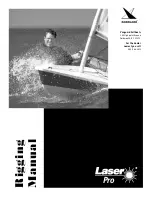
REDTAIL - Version 2015 - May
Page
8
of
28
To turn “ON” the Thruster, on the thruster control in the pilothouse or on the bridge, press the on button
twice. The boat’s bow will move in the direction of the arrow you press. When you are done, please turn
the thruster off.
Fueling Up
OPEN FILLER CAP(S) located on the port and starboard side decks. Note that these filler caps do not
require a DECK FITTING KEY. Be very careful as the chain securing the caps to the boat often break – do
not lose one of these caps overboard, they are expensive to replace and we don’t want any water in our
diesel.
MAKE SURE YOU HAVE THE RIGHT FUEL!
DIESEL! DIESEL! DIESEL!
MAKE SURE IT IS GOING INTO THE RIGHT DECK FILL!
DOUBLE-CHECK!
Before pumping, have an oil/fuel sorbs handy to soak up spilled fuel. You should have a rough idea of the
number of gallons of DIESEL you will need by the engine hour indicator or the sight glasses located on the
forward end of each fuel tank in the engine room. Also periodically have someone look at the sight glasses
to see your progress. Note that you will have to open the ball-valves at the top & bottom of the sight
glasses to allow the fuel level to be accurately read. When full, the fuel level in the sight gauges should be
slightly above the top of the metal indicator gauges. Watch both sight gauges in the engine room as both
tanks will fill while fueling one side.
Place the DIESEL nozzle into the tank opening, pump slowly and evenly, and note the sound of the fuel flow.
Pumping too fast may not allow enough time for air to escape, which may result in spouting from the tank
opening. As the tank fills, the sound will rise in pitch or gurgle; the sound may indicate that the tank is
nearly full. Pay attention to the TANK OVERFLOW VENT
on the outside of the hull near the fuel fill opening.
Pay attention to the sight glasses; do not over fill. Top off carefully, and be prepared to catch spilled fuel.
Spillage may result in a nasty fine from law enforcement.
Replace each tank cap. Turn on blower before starting engines.
Caution -- Clean up splatter and spillage
immediately for environmental and health reasons. Wash hands with soap and water thoroughly.
Also,
note that diesel on fiberglass when mixed with salt water can be extremely slippery.
Fill the DIESEL fuel tanks FULL, but do not overfill.
BOAT ELECTRICAL
The electrical system is divided into two distribution systems: 110-volt AC and 12-volt DC.
The systems are controlled from the AC/DC ELECTRICAL PANEL located in the stairwell from the Pilothouse
to the staterooms and the SHIP-SHORE MAIN POWER SOURCE SWITCH found behind the door just below
the electrical panel. When not connected to shore power, batteries are providing all power. Therefore,









































